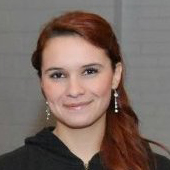There is a myriad of literature about conducting research with children—in both academic and industrial settings—that illustrates different research methods, when and how to use them, and their challenges and advantages. Some examples include my own past columns on UXmatters:
- “Approaches to User Research When Designing for Children”
- “Co-designing with Children”
- “A Closer Look at Diary Studies with Children and Teenagers”
- “Using Paired Interviews to Understand the Current and Future Perspectives of Teenagers”
2. Selecting the Right Participants
Finding and recruiting the right children to participate in studies can be challenging—especially when doing research for new products or for companies that kids and their parents do not recognize as being relevant to them. However, intercepting parents and kids in public spaces like parks or museums or posting general ads on social networks can work well for projects that lack complexity, where the objective is to do iterative product evaluations and gain exposure among young users. Traditional friends-and-family recruiting can also work well when you don’t need a large pool of participants.
If you’re doing research for a global product from an already established company, chances are that you’ll be able to recruit kids in more traditional ways, using recruitment screeners or a database of children that have previously signed up for research with the company. Reaching out to schools, day-care centers, or kids museums to expand your pool of participants is always a possibility.
Although it’s not always possible, talking with the kids or their parents before choosing them to participate in a study can help you to prepare better and make sure that you select the participants that can give you the most valuable data. You can discern how expressive they are, what special accommodations you may need to make for them, and whether they really match the recruitment criteria you have set for your study.
3. Selecting the Right Time and Place for Your Research Sessions
The research sessions should take place in a location where the children will feel at ease, but won’t be easily distracted. This generally means visiting children in their homes or at school and making the necessary preparations to ensure that the space is well suited for your research needs.
However, if you work for a company that the kids would recognize and they are familiar with your products, having them visit your company headquarters and meet the design team there can be an exciting adventure for them. Taking advantage of the company’s facilities—from multipurpose rooms to play-testing labs—can simplify the preparation of the space that you need for your research.
Research sessions normally last for an hour. It is important to schedule the sessions around the children’s family and school schedules and to avoid times when they are tired after a long day of activities. This often means conducting research on weekends.

